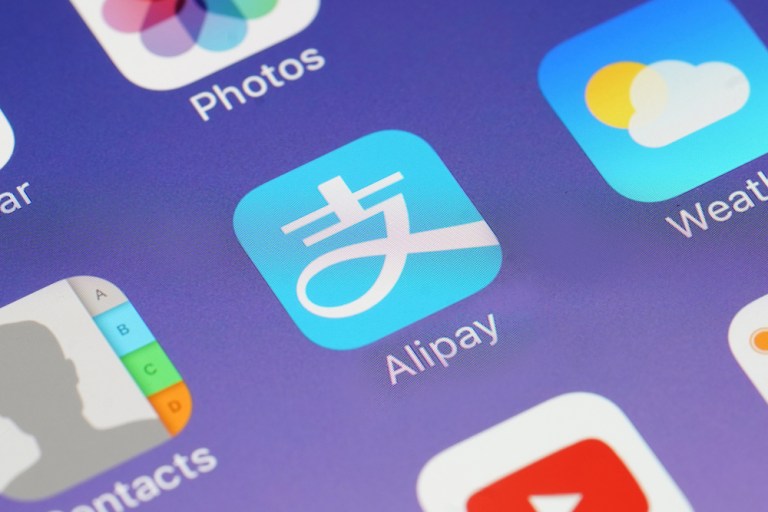Building Bridges For Chinese Consumers To U.S. Commerce

According to the U.S. Commerce Department, 2.97 million Chinese nationals visited the U.S. in 2016 (the last year for which data is available), spending a net total of $333 billion. That’s roughly $7,200 per person per U.S visit, according to the U.S. Travel Association.
It’s also a number that is only expected to grow, as both the number of tourists and volume of spend increase. Only 5 percent of Chinese citizens hold passports, and the nation’s largest online travel service, Ctrip, predicts that number will double over the next two years.
But as Alipay’s president of the Americas, Souheil Badran, told Karen Webster in a recent conversation, those spending-enthused customers have hit something of a roadblock to spending money while traveling in the U.S.
“When [the Chinese consumer] comes into the U.S., they were always limited by the amount of cash they could carry with them,” Badran said, noting that this limit represented a loss for both U.S. merchants and Chinese customers. This is because the method of payment that most Chinese consumers use for purchases back home, Alipay, was not accepted anywhere in the U.S. – and most U.S. merchants don’t accept the only Chinese credit card that they have, Union Pay.
Going forward, the road will get much easier for Alipay’s 600 million users.
The Alipay Freedom Pay Partnership
You read that above number right – during their conversation last week, Badran confirmed the official usership count for Alipay. If Alipay were a nation, it would be the third largest on Earth.
The overwhelming majority of Alipay users are Chinese nationals, and a user base that is overwhelmingly enthused about using mobile payments. According to the latest figures from Nielsen, 65 percent of Chinese tourists have used mobile payments to pay abroad, 83 percent ask at every merchant if they are available, and 90 percent have noted a strong preference for mobile as their desired payment method.
With demand that undeniably strong, Badran noted, Alipay – through its just-announced partnerships with Freedom Pay and First Data – is clearly in line with the massive and growing platform’s general preference for giving users what they want.
“If you look at our approach, we are building a relationship with the channel – whether they are ISVs, merchant solutions partners like First Data, integrated payments/POS solutions like Verifone or niche payments players like Freedom Pay,” Badran told Webster.
What brings them all together is the ability to strategically enable the contexts in which the Chinese tourist will want and need to use Alipay. Their recently announced taxi deal with Verifone, he noted by way of example, turns Alipay on for users in 1,300 taxis in New York and Las Vegas, payment-enabling the ride from the airport to the hotel and all of the places in between.
Through their new partnership with secure commerce technology provider Freedom Pay, Alipay gives users newer and more expansive access to merchants that use Freedom Pay’s services in North America – including vendors at the airports, but also merchants at entertainment venues, resorts, sports arenas, travel plazas and universities.
Moreover, Badran noted, Freedom Pay allows Alipay to establish a stronger presence in Las Vegas, one of Chinese tourists’ top 10 destinations in North America, particularly when it comes to accessing services at events (of which there are many in Vegas).
The First Data Pair-Up
Yesterday’s First Data announcement extends the partnership that was announced in May of 2017 to integrate Alipay into First Data’s Clover POS suite, and also adds 35,000 additional merchants to the growing roster of businesses accepting Alipay in store. The latest rollout enables Alipay acceptance to the next tier of merchant.
The Bigger Picture
Chinese tourists are increasingly traveling to the U.S., Badran noted, but that travel is not quite evenly distributed just yet. The top 10 North American cities that Alipay is targeting mirrors their travel patterns: Los Angeles, New York, San Francisco, San Diego, Chicago, Houston, Seattle, Toronto, Vancouver and Calgary.
“The travel is very concentrated, on the West Coast, Northeast, some in the South,” Badran noted. “It really is on the outer perimeters in the U.S.”
But wherever they travel, the goal is to free the Chinese consumer from that cash dependence –so they can spend whatever, whenever.
“Alipay is so attractive because they can tailor their favorite underlying funding source to make their payments,” said Badran. “That might be a debit card, or it might be a loan they take from us to expand past their cash buying power.”
The consumers and Alipay are coming to the U.S., to Canada and, next, to LATAM, said Badran. In news announced today (March 20), Alipay has partnered with Openpay in Mexico so that Alipay users can pay at the 17,500 points of sale powered by the Openpay network in that country — as well as other SME merchant outlets throughout Latin America as Openpay expands its own footprint in the region.
It’s all part of the bigger plan, says Badran to be sure that Alipay is an option where the Chinese consumer wants to spend when traveling outside China: at hotels, at big merchants, and small merchants, at events and even at the airport.
And, he told Webster as their conversation closed out, just like they would if they were at home. “We don’t limit them. And that is one of the main reasons we have 600 million users.”